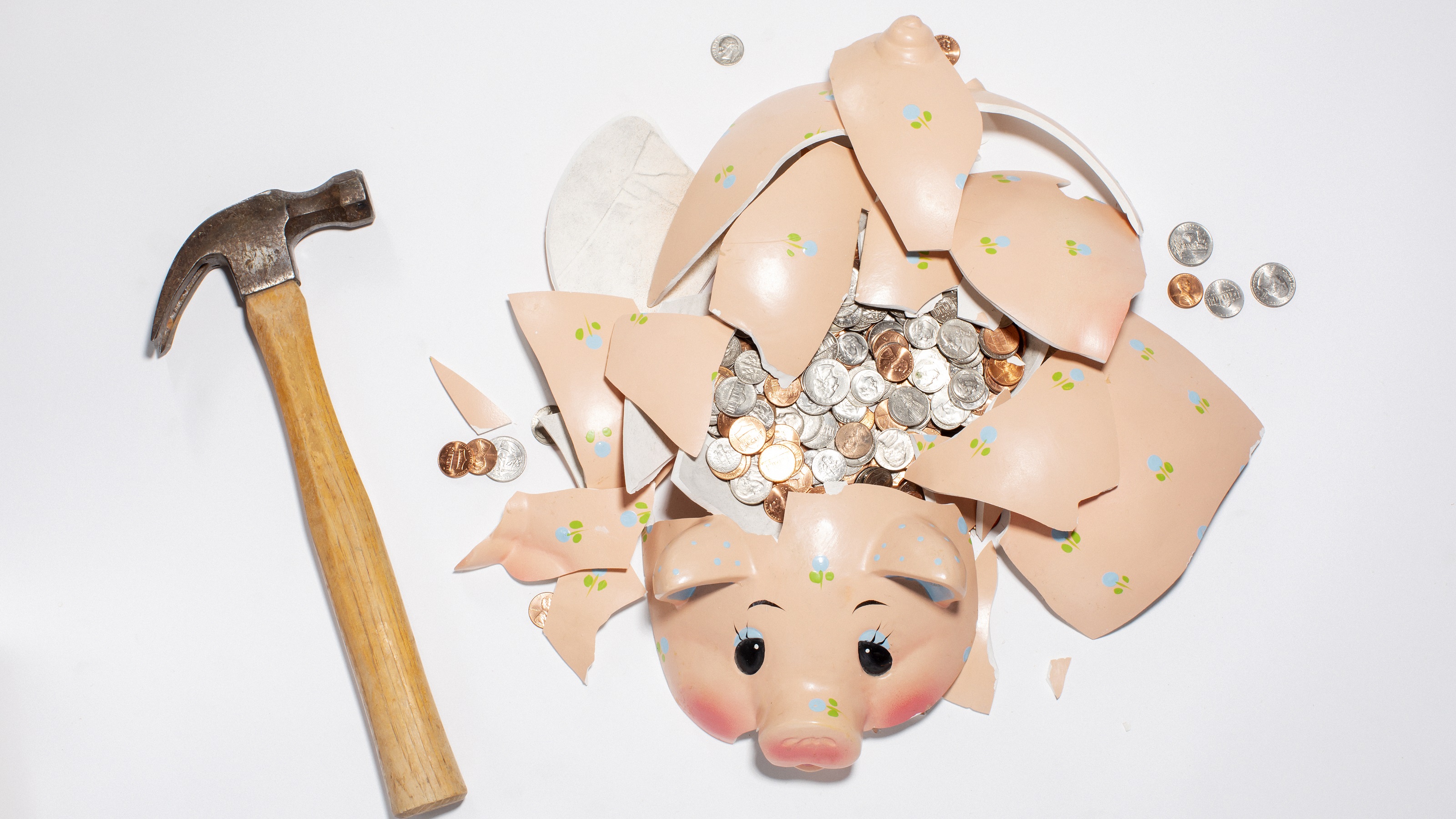Forget ‘Girl Math’: Handle Your Money Like a Woman
Social media phenomenon builds on stereotype that women are bad at math and can’t manage their money. Studies show that just isn’t true.


Unfortunately, there is a new phenomenon that has slipped into our lexicon: girl math. It has inundated TikTok feeds and memes. You can laugh it off as just goofy stuff, but I think we have to take a closer look. The tropes of “women being bad at math and with money” are alive and well in this seemingly goofy practice. Your grandchildren are at risk.
What is ‘girl math’?
Basically, the proponents of “girl math” will look at the cost of an item and divide it by how often it is used. So, the lower the cost per usage, the thriftier the purchase. Girl math thus justifies the purchase by breaking it down into fractional payments because it would be worn or used multiple times. Or, if something is on sale, a shopper using girl math will look at the costs of the items that this new item could replace. Confused? You are not alone.
Here is an example: Let’s say you have lots of pocketbooks that serve lots of purposes. You use a carry-on bag for your flights, a beach bag for the beach and a work bag for every day. Now let’s say you decide to buy one big tote bag that can be used to replace all of your other bags. Girl math would tell you to divide the price of the tote by the costs of the bags it replaces and/or the number of times you will use it. So, utilizing this logic, the lower the cost per use, the thriftier the purchase.

Sign up for Kiplinger’s Free E-Newsletters
Profit and prosper with the best of expert advice on investing, taxes, retirement, personal finance and more - straight to your e-mail.
Profit and prosper with the best of expert advice - straight to your e-mail.
Here is another example of a girl math conversation: “Of course it was worth buying my $5,000 wedding gown. If I didn’t, I’d hate looking at my wedding photos and want to re-create my entire wedding for lots more money.”
Girl math purports to combine three economic principles: cost per wear, sunk cost and prospective cost. Cost per wear has been described above and is pretty simple. Sunk cost indicates that money that’s been spent can’t be recovered. Prospective cost means these are future costs that may be avoided if, on a present value basis, you take action now; i.e., you buy the item now rather than waiting. For example, the coat you want may be on sale off-season, but may go up in price in-season. If you don’t buy it now, you are losing money. Conversely, this twisted logic also means that if you decide not to buy something, you are making money.
I don’t want to breathe any more life into this craziness.
There’s also ‘boy math’
Don’t worry, there is also “boy math.” But boy math doesn’t mock men for indulging in ridiculous spending habits, like girl math mocks women. It doesn’t show justification of a purchase by breaking its cost down into fractional payments over the time it is worn. Boy math just mocks some exaggerations by men.
For example, some men might say they are six feet tall when they are really five foot eight. Or my favorite, an X tweet mentioned in the Business Insider article linked above: men “being afraid of gold-diggers when you only have 3 pairs of socks to your name.”
What’s old is new again
The stereotype perpetuated by girl math is not new — remember Valley girls, dumb blondes and airheads? It is just being recycled to make girls look dumb. Frankly, it is toxic, as noted by Business Insider. The stereotype that “girls are not good at math” undermines girls’ self-confidence. If parents and teachers buy into this, they will tend to underestimate the math abilities of girls. So, consequently, girls may receive less attention in class compared to their male counterparts. The effect? A “boys’ club” that excludes girls who are then underrepresented in STEM (science, technology, engineering, mathematics) fields. These are the fields of the future.
This is subtle and so damaging to girls. A study published in Science even “showed that male students who were not academically successful still majored in STEM fields such as engineering and computer science at a dramatically higher rate than female students with a similar achievement level.”
Are women dumb with money?
I guess that this is the real question. Perception has gotten in the way of reality. Women have been told for so long that they are bad with math and money that a Women and Money survey by Fidelity showed that only 9% of the women asked about handling investments said that they believed that women could outperform their male counterparts.
Here is the reality. Women actually outperform men when it comes to investing. A Wells Fargo study in 2023 found that women take only about 85% of the risk men take, yet they still earned a higher risk-adjusted return over time.
Research by Nationwide also shows that women are forward-thinking and often less impulsive than men. Men will sometimes impulsively react when they hear that a friend’s broker found a “hot” investment that has a huge return. They may “want in.” Women are not so fast to react. Investing for women is about their future. A whopping 83% have a strategy in place to generate guaranteed income in retirement. They want the money there when it is needed. It’s not about the “quick kill” for them. It’s about a steady lower-risk return they can count on. Sixty-six percent of women, according to Fidelity, have said that they invest to meet long-term goals.
Men also tend to think that if they are actively involved in investing that their returns will be greater. In a study from the University of California, findings showed that men trade 45% more frequently than women, and this reduced their returns by 2.65% per year, less than women’s 1.72%.
Women also tend to invest with purpose. A Money Crashers survey found that almost half of women rated a company’s social mission as extremely or very important to them, compared with just 29% of men.
Women’s financial superpower
Most women are not listening to the noise. A report by Fidelity shows that 60% of women invest in the stock market. Granted, many are investing via 401(k)s offered by their employers, but the overhang of insecurity is still seen, as 40% of women think they should be doing more with their finances and aren’t.
My conclusion: Stamp down the girl math … and just handle money like a woman.
Related Content
Get Kiplinger Today newsletter — free
Profit and prosper with the best of Kiplinger's advice on investing, taxes, retirement, personal finance and much more. Delivered daily. Enter your email in the box and click Sign Me Up.

Neale Godfrey is a New York Times No. 1 bestselling author of 27 books that empower families (and their kids and grandkids) to take charge of their financial lives. Godfrey started her journey with The Chase Manhattan Bank, joining as one of the first female executives, and later became president of The First Women's Bank and founder of The First Children's Bank. Neale pioneered the topic of "kids and money," which took off after her 13 appearances on The Oprah Winfrey Show.
-
 Should You Get Auto or Home Insurance Through Costco?
Should You Get Auto or Home Insurance Through Costco?Costco members can access discounted insurance through Connect by American Family — but is it really a better deal?
By Paige Cerulli Published
-
 Stock Market Today: Uncertainty Proliferates: Dow Loses 1,014 Points
Stock Market Today: Uncertainty Proliferates: Dow Loses 1,014 PointsWeaker-than-expected consumer inflation data wasn't enough to stabilize sentiment during another volatile day for financial markets.
By David Dittman Published
-
 Going Through Probate? How to Find the Right Attorney
Going Through Probate? How to Find the Right AttorneyJust having the skills and experience to do the job isn't enough. The probate attorney you hire needs to have the right temperament for your particular case.
By John R. Silva, Esq. Published
-
 Widow's Penalty: Three Ways to Protect Your Finances
Widow's Penalty: Three Ways to Protect Your FinancesHigher Medicare premiums, smaller Social Security payments, bigger tax bills … Financial changes can hit hard when a spouse dies. How to counter the blow.
By Ashley Terrell, IAR Published
-
 Four Ways Your Phone Can Help You Weather Market Volatility
Four Ways Your Phone Can Help You Weather Market VolatilitySmartphone apps can help investors make healthy decisions and maintain a disciplined investment approach — even when emotions try to steer them off course.
By Marco De Freitas Published
-
 Stick to the Plan: Don't Panic During Economic Uncertainty
Stick to the Plan: Don't Panic During Economic UncertaintyTake a breath and step back. Focus on a solid fiscal foundation to stabilize your investments during stock market volatility.
By Eric Lahaie, CFS®, RICP® Published
-
 How Inflation Affects Your Finances and How to Stay Ahead
How Inflation Affects Your Finances and How to Stay AheadThe cost of goods and services is certain to rise over time, making it essential to have a financial plan that will help you keep pace.
By Kyle D. Sikes Published
-
 Now's a Great Time to Become a Financial Adviser: Here's Why
Now's a Great Time to Become a Financial Adviser: Here's WhyThere's a growing need for financial advisers. Why not take on a role that offers earning potential and work-life balance and helps change lives?
By John Roberts Published
-
 Little-Known Ways to Guard Your Retirement Income
Little-Known Ways to Guard Your Retirement IncomeIs your retirement income safe if stocks continue to plummet? Most retirees don't know these reliable options to limit their market exposure.
By Jacob Cornell Published
-
 Three Warning Signs Your Investments Are (Needlessly) Too Risky
Three Warning Signs Your Investments Are (Needlessly) Too RiskyAll investments come with risk, but the secret is to take only enough risk to get you to your specific savings goals — and no more than that.
By Eric Roberge, Certified Financial Planner (CFP) and Investment Adviser Published